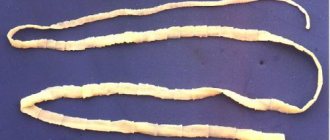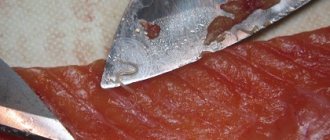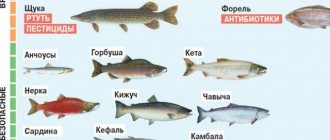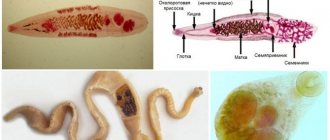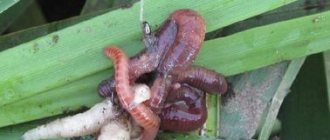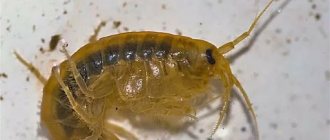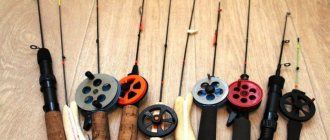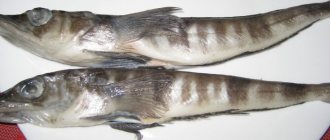Sea bass meat is not only extremely tasty, but also contains a large amount of vitamins and minerals. Some of the perch species are already listed in the Red Book. The size of this fish sometimes reaches one meter, and its weight exceeds 10 kg. Unfortunately, recently cases of infection of marine fish with parasites have become more frequent. Not all of them are harmless to humans. Many of them can cause irreparable damage to health. Parasites in sea bass are represented by various species, among which Diphyllobothrima latum and Iphyllobothrium dendriticum are dangerous.
Sea bass
It has the following characteristics:
- This fish is viviparous. That is, she does not lay eggs, but immediately releases the fry.
- Externally, sea and river perch are very similar.
- It has sharp fins that can cause a lot of trouble to humans. When the skin is damaged after a fin prick, difficult-to-heal, purulent wounds often appear.
- It belongs to the scorpionfish family and, as already mentioned, can reach quite huge sizes.
- This fish is long-lived. Typically, its lifespan ranges from eleven to fifteen years.
She prefers to live at a depth of 100 to 500 m. As a rule, the Atlantic and Pacific oceans are considered the main habitats.
Chemical composition and benefits
Sea bass meat contains virtually no carbohydrates, and the amount of fat in its composition is extremely low. But it contains a lot of protein (about 18 mcg per 100 g of product). Among the microelements, the following substances are distinguished, presented in the largest quantities:
- A huge amount of phosphorus, thanks to which brain cells and the nervous system are formed. The lack of this microelement leads to nervous exhaustion, loss of concentration and metabolic disorders.
- Iodine regulates the functioning of the thyroid gland and strengthens the immune system.
- Iron is involved in the process of hematopoiesis.
- Zinc has a beneficial effect on the genitourinary system of both men and women.
- Thanks to potassium, muscles are strengthened, and calcium is involved in the creation of bone mass.
Other microelements are also present in relatively small quantities: cobalt, chlorine, copper and sulfur. The calorie content of meat is just over 130 kilocalories per 100 g of product. It is noteworthy that when smoking, the calorie content is reduced by 50 kilocalories.
Among the vitamins, the largest amount belongs to vitamin A, group B, E and PP. The presence of omega-3 polyunsaturated acid in fish meat is also important. It rejuvenates the body and participates in many metabolic processes. It has been observed that people who frequently eat sea bass have healthy hair, smooth skin and healthy blood vessels. They practically do not suffer from high blood pressure and have stable mental health.
What parasites live in sea bass
According to statistics, about 15 million people in different countries get sick every year because of the meat of this fish. Most of the parasites in sea bass are not harmful to humans. Such harmless creatures include the following helminths:
- Thin, thread-like Pharionis cystidicola.
- In the liver of the fish you can find a white parasite in the shape of a ball.
Dangerous parasites of sea bass for humans include Diphyllobothrium latum (wide tapeworm). If the disease is ignored, the parasite grows up to fifty meters in length.
Slightly smaller in size is Diffylbothrium dendricitum, which mainly lives in fresh water bodies.
The danger of parasites is that they can live not only in the liver and intestines, but even in the brain and eyes. Unfortunately, they are not so easy to detect, and their actions are extremely aggressive and lead to irreversible consequences. Particularly dangerous is the sudden proliferation of helminths. This happens most often as a result of weakened immunity. Sometimes people don't know which parasites in sea bass are dangerous and which are practically harmless.
Parasites are so small that they are extremely difficult to detect. Today tests are not available to everyone. Their price is extremely high, and the location is often limited to a few large cities.
What are red worms in the perch?
Parasitic organisms can be found not only in people, but also in the foods that people eat, including fish.
Once in perch meat, the components go through their life cycle and continue it when they enter the human body. Let's consider the disease opisthorchiasis, what parasites are present in perch, and all the problems associated with it, after which we will evaluate the specifics of eliminating the disease.
Definition of opisthorchiasis
Opisthorchiasis is a disease caused by a specific parasite. An alternative name for the disease is cat fluke.
Today, this disease has become widespread among animals and people who eat fish. There are parasite eggs in human feces, and through shellfish that ingest them, these elements have a certain cycle. Then the flukes enter the muscle tissue of the fish and, together with a poorly processed gastronomy product, end up in the human body.
The parasitic element settles in the area of the gallbladder and ducts, liver, and near the pancreas . In soil conditions, the helminth lives for 10 days or more, in an aquatic environment the life expectancy is up to a year. This pest can stay in the host’s body for years.
The incubation time is from 21 days , the onset of human disease is accompanied by acute symptoms. With untimely treatment or its absence, the acute form, as usual, passes into the chronic stage.
What parasites are found in perch?
Perch is a common fish in fresh water bodies and is therefore eaten by many people. This results in an increased incidence of helminths.
Considering the answer to the question of whether there is opisthorchiasis in perch, we can answer in the affirmative, since in the fishing industry all fish varieties are sold for sale after first passing control, but if you eat fish caught yourself or purchased from amateur fishermen, you can become infected helminths immediately.
Non-dangerous parasitic creatures
There are a number of helminths that, while parasitizing perch, do not pose a danger to humans. It is only important to detect them in a timely manner at the stage of cleaning fish from scales in order to prevent serious infection and take proper cooking skills.
Ligula
These worms are most often found in perches. The largest of the worms is called LIGULA , reaching 15 cm in length. Due to such impressive dimensional characteristics, metabolic disturbances and serious consequences occur.
There is no need to throw away an infected individual; it is enough to remove the insides and rinse thoroughly.
The safety of the product is associated with the absence of penetration of the larvae into the area of the interior of the muscle structure, so there is no threat to life.
Schistocephamos
They are rarely found in perches, but may be present. The worms are smaller in size than the previous group of parasites, however, they are not inferior to them in terms of “harmfulness”.
This group does not pose much harm to humans. If these parasites are found, it is necessary to bury the entrails so that animals on the street cannot notice and get them.
Cystidicola farionis
Typically, these helminths progress during the cool season and are most often found in smelt. They practically never occur in perch, but there are exceptional cases.
These substances parasitize the swim bladder and look extraordinary: they have a thin thread-like structure.
These substances are not harmful to the human body, but before cooking, you need to thoroughly wash the meat and cook it.
Trienophorus nodulosus
Most often found in burbot, perch, and crucian carp. It is possible to spot a flatworm up to 12 centimeters long.
Cysts can be present in different foods, and contaminated foods can be eaten, but their insides must be thoroughly cleaned of harmful parasites and cooked in accordance with basic standards.
Philometra
This parasite is often found in fish that are caught in fresh water bodies. Inside such fish individuals may contain thin parasitic worms that are up to 10 cm long.
Often the location of this parasite is the gill area or a place under the scales. The disease occurs in carp, perch, and pike; in appearance it may have many similarities with veins. A person cannot become infected with them.
Dangerous parasites
Perch, which can contain a variety of parasites, is a harmless fish if you cook it correctly. However, some parasites can pose a serious danger and pose a threat to human life and health. This is especially true for small parasitic individuals, barely reaching 5 mm in length.
It is necessary to promptly determine whether there are red worms in the perch, what they are, and also understand what class the pests belong to. This approach will ensure that there is no chance of contracting diseases that are difficult to treat.
Diphyllobotrimum latum
This parasite can most often be found in the eggs and gills of fish. If a person consumes an improperly prepared product, serious infection may result.
Most often, the pest is found in the meat of burbot, pike and perch, if the larvae enter the human body.
Often practice has included cases of infection in which the worm lived in the human body for 10 years or more.
Iffilobothrium dendriticum
These individuals are found exclusively in the area of reservoirs located on the territory of Russia. There are larvae in the fish itself, then they penetrate, during which the size indicators reach 1 meter or more.
Worms live for a six-month period, but in a short time a person usually encounters a large number of pathologies.
What is the harm of helminths?
Some helminths and parasitic individuals do not pose any harm, but there are groups when perch brings opisthorchiasis - a disease that was mentioned earlier.
In this regard, failure to follow the rules regarding proper preparation of dishes, as well as ignoring the technique of inspecting fish for contamination, can lead to serious consequences in the form of chronic diseases.
Symptoms of infection
Symptoms are present in infected fish, and then the signs should be looked for in an infected person whose body has received meat spoiled by parasites.
- In infected fish, the muscle structure is significantly damaged; if you press on the meat, the hole that has formed will not level out over time.
- In the presence of infections, cloudy pupils and significant drying of the mucous membranes of the eyes occur.
- The appearance of the individual’s abdomen also changes: it becomes saggy and swollen.
- The gills begin to take on a swampy hue, and the internal organs stink horribly when cut up.
- There is a noticeable protrusion of the anus compared to the body of the fish, and cloudy mucus begins to flow out of it.
- During the preparation of the broth, you can find a large amount of turbidity and strange dark particles.
Symptoms of infection in humans can vary. If a person has eaten an infected perch, dangerous symptoms cannot be avoided:
- Increased body temperature;
- Vomiting and nausea;
- Observation of significant intestinal disorders - severe diarrhea;
- Allergic reactions and redness on the skin;
- Headache, dizziness and general muscle weakness.
- Other symptoms are often observed, in which the patient requires urgent hospitalization.
Source: https://ParazitHelp.ru/parazity/krasnye-chervi-v-okune-chto-jeto.html
How to determine the presence of parasites
There are some characteristic signs for this:
- For some unknown reason, a person develops a runny nose that does not go away within several days.
- Watery eyes indicate the possible presence of parasites obtained from sea bass.
- Joint pain is also a signal of the possible appearance of helminths.
- Stomach upset, diarrhea, constipation, or strange colored or smelling stool may indicate worms in the stomach.
- Regular sore throats and colds.
- Poor appetite and nervousness along with bags under the eyes are also very unfavorable symptoms.
People who have foreign elements in their bodies feel tired and have frequent headaches. Their performance is reduced, which often results in nervousness and irritability.
Parasites in fish: herring, pike, photo
Fishing professionals know that all types of fish contain parasites, because they encounter such “guests” quite often. After opening the fish, during its preparation, people, finding large worms, throw it away, despite the fact that many varieties of large parasites are absolutely harmless to humans.
Have you been trying to get rid of PARASITES for many years?
Head of the Institute: “You will be amazed at how easy it is to get rid of parasites by taking every day...
Read more "
- Parasites living in raw fish
- Harmless parasites for the human body
- Helminths
- Schistocephamos
- Cystidicola farionis
- Trienophorus nodulosus
- Philometra
- special instructions
- Diphyllobothrium latum
- Diffylbothrium dendriticum
The real danger is posed by small species of parasitic worms. As a rule, fishermen who know a lot about this matter do not throw away useful fish meat, but, armed with certain knowledge, skillfully deal with parasites without damaging their own refrigerator.
Parasites living in raw fish
All varieties of commercial fish, without exception, must undergo special veterinary and sanitary control before being sent for sale. These rules are accepted and used everywhere, regardless of region. A serious problem in this area is caused by unscrupulous amateur fishermen who fish and sell their catch, which subsequently leads to the fact that the people who made the purchase become infected with parasites. There are certain signs by which infected individuals can be distinguished, but not every person is familiar with them. That is why diseases caused by parasites living in fish are now quite common.
Harmless parasites for the human body
There are a number of parasitic worms that, while causing harm to fish, remain practically harmless to humans. It is important to promptly identify infected individuals and take special measures during cooking. This will help prevent the consumption of larvae and adults found in many types of fish. Experts recommend completely eliminating this food product from the diet if you do not have certain cooking skills.
Helminths
Parasites of this type are most often found in fish. Mostly the carp family is infected: silver bream, bream, rudd. The most dangerous and fairly large parasitic worm is the ligula, which can be seen in the photo. This worm reaches more than 15 cm in length at maturity. Due to its large size, the parasite causes metabolic disorders in the human body, which is fraught with serious consequences.
If you find a ligula inside a fish, you should not rush to throw it away. It is recommended to clean the fish from the entrails, along with which the parasitic worm is removed. After washing the meat, you can safely eat it, since there is no danger to humans in this case. The larvae of the worm do not penetrate the muscle structures of the fish, which eliminates the possibility of infection.
It is important to prepare the product correctly, giving it the heat treatment necessary to kill parasites. Otherwise, in the presence of smaller types of helminths, there is a possibility of human infection with helminthiasis. The disease is the penetration of parasites such as trematodes, cestodes and roundworms into the human body. In the human body, the parasite can be localized in the internal organs or in the subcutaneous tissue.
Schistocephamos
A fish such as crucian carp can contain worms that are slightly smaller in size than ligula - digramma. You can see what the parasite looks like in the photo. Smelt often contains parasites such as schistocephamos, which reach no more than 2 cm in length, as shown in the photo. These parasites are practically harmless to humans, as they are not capable of harming their internal organs. This type of parasite can be found in the intestines of red fish such as trout and salmon.
If such parasites are found, it is recommended to gut the fish entrails and bury them in such a way that animals cannot reach them. Fish can be eaten after thorough washing and cooking.
Cystidicola farionis
In winter and spring, when the greatest activity of smelt is observed, many fishermen wonder whether contaminated fish can be eaten. The parasite is located in the swim bladder and has a peculiar appearance: a thin, thread-like parasite. Cystidicola pharyonis is a thin round worm. It does not harm the human body, but despite this, it is recommended to remove all entrails before cooking smelt.
Trienophorus nodulosus
White balls can often be found in the liver of burbot. When they are damaged, as a rule, a flatworm emerges, which can be seen in the photo. Its length varies between 10-12 cm. Cysts can also be found in other fish. Infected fish can be eaten, the main thing is to completely clean its insides of parasites and cook it, observing certain standards.
Philometra
Fish caught in fresh water bodies may contain thin parasitic worms, which can reach up to 10 cm in length. This parasite is localized in the gill area or under the scales. In the carp family, this worm is most common, localized under the scales in the area where the upper fin is located. In appearance, this parasite resembles veins. Infecting humans is impossible. The intermediate host is crustaceans, without which the parasite cannot be transmitted.
special instructions
Please note that if large helminths are found in the internal organs of the fish, you should not dispose of the entrails by throwing them back into the reservoir. This method of getting rid of parasites risks infecting other fish.
You should not refuse to eat fish dishes, but it is important to follow a number of recommendations with which you can protect your body from infection:
You will be surprised how many parasites will come out if you drink a glass of regular...
Parasites will leave the body in 3 days! You just need to drink on an empty stomach...
- do not taste raw fish when cooking;
- boil or fry fish for at least half an hour;
- Before cooking, be sure to cut the meat into small cubes, no more than 1 cm;
- Freeze fish meat first.
Dangerous parasites for the human body
Small parasitic individuals, the length of which is up to 5 mm, are really dangerous to humans. It is important to promptly determine the presence of worms in fish, which eliminates the possibility of infection. Otherwise, there is a danger of contracting quite serious diseases that are difficult to treat.
Diphyllobothrium latum
The parasite that lives primarily in the eggs and gills of fish is called Diphyllobothrium latum. A person can become infected by consuming an improperly prepared product. The meat of perch, burbot or pike is predominantly contaminated. Inside the human body, diphyllobothrium larvae can reach 30-50 meters in length. There have been cases of infection of people in whose bodies the parasitic worm lived for 10 years or more.
Diffylbothrium dendriticum
Parasitic individuals live exclusively in reservoirs on the territory of the Russian Federation. The larvae are found in fish, and after entering the human body they can grow up to 1 meter in length. The worm lives for six months, but in a fairly short period of time it provokes a large number of pathologies in humans.
What to do if dangerous parasites are detected?
Experts recommend excluding fish infected with any type of diphyllobothrium from the diet. You can see what the parasite looks like in the photo. In case of exception, it is permissible to eat contaminated fish, provided that cooking recommendations are followed, but only if you have certain skills:
- thoroughly clean the fish;
- cut into 1 cm pieces;
- boil for 30-40 minutes.
To salt infected fish, it is necessary to keep it for 10-12 days at low temperatures, and then leave it for 7-8 days at room temperature in a saline solution. Salt must be added in an amount of at least 3 parts by weight of the fish. Careful preparation and handling of infected fish does not guarantee that infestation will not occur. That is why, to avoid the development of serious diseases, you should not include contaminated fish meat in your diet.
Parasites living in herring
Russian cuisine does not have dishes with raw fish. But in this case we should not forget about the herring. This type of product is quite popular due to its taste and low cost. Not every manufacturer follows the technology for making herring, so contamination cannot be completely ruled out when consuming this product.
Herring may contain various parasites that are causative agents of the following diseases:
- Ligulosis is caused by a tapeworm that reaches 120 cm in length while living in the human body. The parasite compresses almost all internal organs, which provokes their dysfunction, and also releases waste products that cause intoxication of the body. In this case, symptoms such as fever, dizziness, nausea and diarrhea are observed.
- Opisthorchiasis occurs when a cat fluke enters the human body. The disease is accompanied by damage to the gallbladder and ducts, pancreatic gland and liver tissue. The parasite multiplies quickly, causing symptoms such as a bitter taste in the mouth, headaches, fever, constipation and diarrhea.
- Anisokidosis is a common helminthiasis that is detected in fish and also affects human internal organs. In this case, parasitic individuals live in the intestinal space. Primary symptoms include pain in the abdomen and periodic vomiting. Quite often the disease is mistaken for the acute stage of appendicitis. Anisokidosis is accompanied by the development of characteristic intestinal bleeding, because the parasite cuts into the walls, which is the cause of the development of pathology.
- Diphyllobothriasis – by eating herring you can become infected with the broad tapeworm, which can grow up to 25 meters in length in the human body. Clinically, the disease is manifested by complete or partial loss of appetite, headaches and quite severe dizziness, pain in the peritoneum, enlargement of the spleen and liver.
The most dangerous diseases
Among the most dangerous diseases that occur when eating herring is dioctophimosis. In this case, helminths affect the bladder, ureters and kidneys of humans or carnivores, mainly dogs. The eggs of parasitic worms settle in the area of the renal pelvis, where they develop until they reach sexual maturity. In this case, dysfunction of the genitourinary system occurs, which is accompanied by complications such as renal failure. Dioctophimosis can only be treated surgically.
Among the dangerous helminthic infestations, one can highlight ink-spot disease, which infects fish that contain the causative agent of post-diplostomosis in their bodies. This disease is not very dangerous, but experts recommend refraining from eating fish that have dark spots on the body.
How to distinguish infected fish
A product that is unfit for consumption has certain differences, knowing which you can protect yourself from infection:
- Infected fish have damaged muscle structures. When pressed, the resulting hole does not level out.
- The pupils of the fish are cloudy, and the mucous membrane is usually dry.
- The belly of the fish is saggy and swollen.
- The gills acquire a characteristic swampy hue, and the internal organs of the fish have a foul odor during cutting.
- The anus protrudes above the main body of the fish and viscous, cloudy mucus flows out of it.
When preparing contaminated fish, the broth has quite specific characteristics. The broth is usually cloudy. There is no fatty film on its surface. Instead, the broth contains a mass of dark particles and flakes of unknown origin.
source
How to identify sick fish
As a rule, infected fish has an unpleasant odor, which manifests itself when preparing the broth. She should not have dry mucus or a swollen abdomen. Cloudy eyes also indicate that the fish is sick in some way. When cutting up a carcass, heavy bleeding sometimes begins. This phenomenon should not occur in healthy fish. Faded gills and uneven skin also indicate the presence of the disease.
In nature, such fish are delayed in development and often remain small. Her fertility noticeably decreases, and sometimes her ability to reproduce completely ceases.
Is it possible to eat fish if it has worms?
If a person can independently determine the type of parasite and whether it is safe, then the product can be consumed after heat treatment.
The following signs will help you distinguish infected fish from healthy ones:
- Softness of the product. Fresh, healthy meat should be elastic and not leave any dents after pressing.
- Cloudiness of the pupils, dryness around the eyes, black spots on the body. Normally, the fish has clear, convex eyes.
- Sticky skin under scales. A healthy appearance is distinguished by the shine of the scales, they are laid correctly and do not stick out, the fish is difficult to clean.
- An elongated, saggy and swollen abdomen indicates the presence of parasites inside.
- Gill color. An infected individual has greenish gills, while a healthy one has pink gills.
- Unpleasant odor of the product.
Roundworms
Otherwise they are called nematodes. Some of these parasites living in sea bass are practically harmless to the human body. However, there are also those that are extremely dangerous. They cause a disease called anisakiasis. This serious illness is usually very acute. The patient's gastric patency is impaired, fever appears, and after a while - inflammation of the abdominal cavity. The patient requires urgent hospitalization, as a result of which the affected area is reduced. The patient develops ulcers and numerous tumors in the stomach. An infected person constantly vomits and also experiences sharp pain in the abdomen.
To prevent the appearance of parasites in sea bass, it is recommended not to eat fresh fish, but to purchase exclusively frozen products. After all, it is deep freezing for sixty hours that can neutralize the product.
If there are black dots on the body of the perch, then most likely the fish has been affected by flukes. After entering the human stomach, they accumulate in the small intestine and, as a result of the inflammatory process, can lead to necrosis.
Is Sfirion Lumpi dangerous for humans?
The appearance of an infected animal may be a reason to avoid preparing a fish dish, but Sphyrion lumpi does not pose a threat to human health. Before sale, fish are subject to sanitary inspection. If there are single lesions, it is frozen and put on sale, after removing the crustaceans. If helminths are found on internal organs, the fish is processed to obtain bone meal. At home, you should carefully examine the carcasses, remove hard capsules, and wash and heat treat the rest of the meat.
- Zucchini soup - recipes for preparing lean and meat dishes with photos.
- How to find a movie without knowing the title from the description
- When does a baby start crawling, at how many months?
Crustacean parasites
The most prominent representative of parasites under the skin in sea bass is Sphyrion lumpi. It affects both freshwater and sea bass. It appears under the skin of the fish, but sometimes half of the parasite’s body remains outside. In order to get rid of it, you should thoroughly heat treat the meat using salt and a sufficient amount of spices. A healthy fish should have a strong, elastic body with a good layer of fat. Often during the preparation of fish soup, dark pieces of parasites are observed floating on the surface.
Sea bass parasites on it photo |
The taste and benefits of fish meat are undeniable. But recently, parasites have been increasingly discovered in sea bass. Not all of them are safe for humans.
Certain parasites that can be found in sea bass meat can cause great damage to human health.
To protect yourself from such uninvited “tenants”, it will be useful to know what pests are found in fish and how to prevent them from entering the human body.
Benefits of perch meat
The meat of the fish in question is healthy due to its high protein content and almost no fat. In addition to the above, fish contains phosphorus, iodine, zinc, potassium, as well as iron and other elements.
Regular consumption of sea bass helps keep blood vessels, skin and hair healthy, which is provided by a set of vitamins and other useful substances.
Parasites of sea bass
Statistics indicate that, from year to year, the meat of this fish causes helminth infections in a large number of people (about 15 million) around the world. Many marine parasites that live in fish do not pose any threat to humans. Among them there are a thin-bodied, long parasite called pharyonis, as well as a white spherical pest.
Diphyllobothrium latum in red snapper
Dangerous to humans are Diffilobothrium latum, also known as broad tapeworm or Diffilobothrium dendricum. The latter can be found much more often in fresh water than in sea water.
The greatest harm to humans is due to the fact that worms can exist not only in the intestines or liver tissue. Parasites are found under the skin, in the eyeballs and even in the brain tissue.
When a person is infected, he feels a loss of energy, has problems with digestion and joints, and also develops persistent viral infections.
Signs of parasites in red snapper
An unpleasant odor from the fish indicates that it has been contaminated with something. It can come from the process of preparing the broth, although the fish looked quite edible before it entered the pan.
A swollen abdomen and dry mucous membranes also indicate problems. In the process of butchering a sick individual, bleeding may begin, which will be profuse.
Cloudy eyes, dull, pale gills and uneven skin also indicate that the fish is unhealthy.
The patient becomes feverish, develops partial gastric obstruction, and becomes inflamed in the abdominal cavity. The problem can only be eliminated through urgent hospitalization and surgical treatment.
The affected area of the stomach is surgically excised, since multiple ulcerations and tumor-like formations form on it.
Sfiriion lumpi at the red snapper
Parasites on sea bass can be found under the skin. A representative of this type of marine pest is Sphyrion lumpi. But it is also capable of infecting fish living in river waters.
It can be neutralized only by careful heat treatment using salt and various spices.
This crustacean parasite makes the appearance of the fish unpleasant and repulsive, but poses no danger to humans at all.
River perch
The previously mentioned helminths can infect not only sea perch, but also river perch. In addition to them, opisthorchus can be dangerous to humans. This helminth most often affects fish whose habitat is river waters.
It is related to flatworms and chooses the human liver as its site of parasitism, causing damage to its cells and bile ducts. People affected by this helminth often have a yellow tinge to the skin and sclera of the eyes.
Ways to avoid infection
To protect yourself from infection with parasites from fish, you must avoid eating it in a raw or semi-raw state. It is better to purchase it in large shopping centers or specialized markets, where it has undergone thorough sanitary control. Frozen fish is safer because long-term deep freezing helps kill pests.
A person can live in many varieties of parasites, including opisthorchid. These are flukes (flatworms) that enter the body after eating infected fish.
Most often this is sea bass, the parasites under the skin of which can live for a long time. But what are the causes of opisthorchiasis and how to fight it?
Harm from opisthorchiasis
They are very often associated with the occurrence of liver cancer. Once inside, they attach their suckers to human organs and feed at their expense. The most common target for injury is the liver. A person experiences diarrhea and nausea. Body temperature can be either slightly elevated or quite high. Also, with advanced disease, yellowness of the skin and eyes may appear.
The patient's immunity is noticeably weakened due to exposure to a rather strong toxin. Cirrhosis of the liver and inflammation of the pancreas gradually develop.
Prevention rules
Parasites in sea bass die during long-term freezing of products, as well as during salting and drying. In the case of salting, the fish must be in brine for at least seven days, and before drying the number of days increases to two weeks. In the case of smoking, the fish is also kept in brine for as long as possible, and only then smoked.
When heat treated, the baking process should last at least two hours. Fry the meat until a brown crust forms, and the pieces are cut as thin as possible. It is extremely important to use separate knives and cutting boards for cutting fish. After work, all tools are disinfected with a soap solution.
